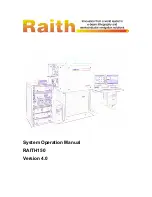
Installation • Known problems/issues
154
Power Panel 500 user's manual V1.40
8 Tips for extending the service life of the display
8.1 Backlight
The service life of the backlight is specified by its "half-brightness time". For example, a specified operating time
of 50,000 hours means that the display would still retain 50% of its brightness after this time.
8.1.1 How can the service life of the backlight be extended?
•
By setting the display brightness to the lowest value that is still comfortable for the eyes
•
By using dark images
•
By reducing the brightness by 50%, which can result in an approximately 50% increase in the half-bright-
ness time
8.2 Screen burn-in
Screen burn-in refers to the "burning in" of a static image on a display after being displayed for a prolonged period
of time. Nevertheless, static images are not the only cause of screen burn-in. Screen burn-in is also referred to as
burn-in effect, image retention, memory effect, memory sticking or ghost image.
There are basically two types:
•
Area type: This type of screen burn-in is indicated by a dark gray image. The effect will disappear if the
display is switched off for a long period of time.
•
Line type: This type of screen burn-in can cause lasting damage.
8.2.1 What causes screen burn-in?
•
Static images
•
No screensaver
•
Sharp transitions in contrast (e.g. black/white)
•
High ambient temperatures
•
Operation outside of specifications
8.2.2 How can screen burn-in be avoided?
•
By constantly changing between static and dynamic images
•
By avoiding excessive brightness differences between foreground and background elements
•
By using colors with similar brightness
•
By using complementary colors in follow-up images
•
By using a screensaver
9 Pixel errors
Information:
Displays may contain defective pixels (dead/stuck pixels) that result from the manufacturing process.
These flaws are not grounds for reclamation or initiating a warranty claim.
10 Known problems/issues
The following issues for the PP500 devices are known:
•
HD resolution (1366x768) is not completely supported by VBIOS, which causes display errors after POST.
The image flickers and is shifted down a line. BIOS POST and BIOS Setup are still displayed correctly,
however. This effect occurs when using operating systems for which no driver is available (e.g. MS-DOS)
or before the operating system's graphics driver is started (e.g. Windows XP boot logo). HD resolution is
displayed corrected again when Windows XP or Windows 7 is booted properly with an installed graphics
driver.
•
The monitor/panel interface does not support RGB signals.
















































